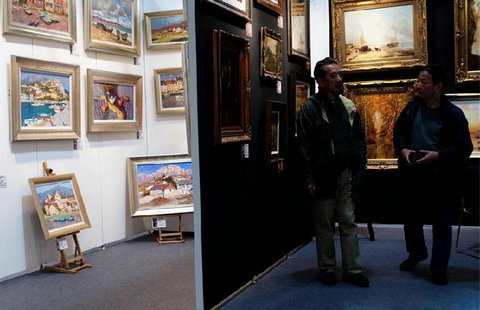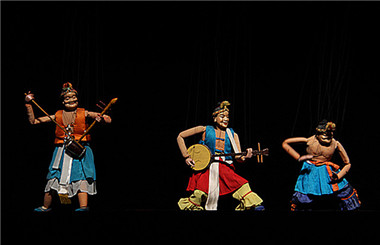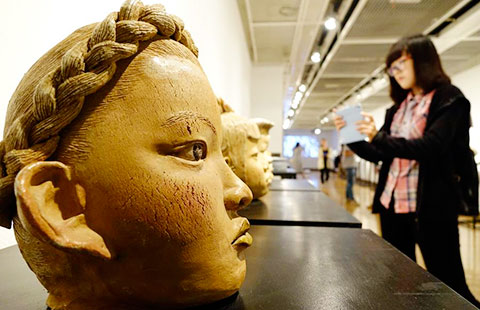Buddha statue dispute to be taken to Netherlands court
By Luo Wangshu and Hu Meidong in Fuzhou ( China Daily ) Updated: 2015-11-17 09:04:54
 |
|
The Buddha statue on display at the Hungarian Natural History Museum in Budapest in March. [Photo/Xinhua] |
One of the lawyers representing a village in Fujian province in its quest to win custody of a 1,000-year-old Buddha statue they say was stolen in 1995 said an appeal would be submitted to a Dutch court later this month.
The statue contains the remains of a mummified monk."We have finished the primary investigation and collection of evidence in Yangchun, Fujian province, in preparation for an appeal to the court in the Netherlands later this month," said Liu Yang, a Beijing lawyer specializing in ancient relics.
One key hurdle is proving that the statue is the same one that was stolen, Liu said.
The lawyers-seven from China and the Netherlands-are seeking to reclaim the Buddha statue from its Dutch owner, architect Oscar van Overeem.
Van Overeem said in a telephone interview with China Daily in May that he would return the artifact to China. He said he bought it for 40,000 Dutch guilders ($20,500) in 1996 from a collector in Amsterdam who had acquired it in Hong Kong.
But residents said that van Overeem's attitude has changed over the past six months, and he now wants $20 million to "compensate for the research and preservation of the statue for 20 years".
"We have to go to court," said resident Lin Yongtuan.
Yangchun residents say this statue is the one that was stolen from the village in 1995, though van Overeem claims to have proof it didn't come from there.
China Daily was not able to reach van Overeem on Monday.
Residents were busy with the observance of rituals to worship the statue on Monday.
"Although the Buddha statue was stolen in 1995, the annual ritual of worship was never interrupted," said Lin, one of the first residents to recognize the Buddha from pictures of artifacts in a public exhibition.
"When I saw pictures of the statue, I thought it looked like the one that was stolen from our village," Lin said.
The statue grabbed global attention in February after a scan revealed that it contained the mummified remains of a Buddhist monk. It was part of the Mummy World Exhibition at the Hungarian Natural History Museum in Budapest, which had planned to display it until May.
Van Overeem, a private collector, had previously loaned the piece to the Drents Museum in Assen, the Netherlands. In the wake of news reports, the Budapest museum returned the relic to Assen.
In March, after seeing pictures of the statue, residents of Yangchun pointed out its resemblance to the one that was stolen in 1995.
Evidence suggesting the stolen statue is the one shown in Budapest has been presented by the Fujian Administration of Cultural Heritage.
The State Administration of Cultural Heritage said later that it would communicate with van Overeem in hopes he would allow the Buddha's return to China.
However, van Overeem said he has proof that the statue did not come from the village.
He accused the residents of making up the story and said he could scientifically prove they were wrong and that the statue did not come from their village. He did admit, however, that the Buddha came from China. He said it had become a political football.
Related:
Field investigation complete on village’s case to reclaim 1,000-year old statue
Why return of mummified Buddha matters
Village awaits return of Buddha statue with monk inside
Mysteries of the mummified Buddha Zhanggong
Chinese authorities contact Dutch collector of stolen Buddha
- Stolen Buddha sculpture head to unite with the body at Taiwan exhibition
- Chinese authorities contact Dutch collector of stolen Buddha
- Mummified Buddha shown in Hungary stolen from China: government
- Village awaits return of Buddha statue with monk inside
- Dutch owner to send preserved monk relic back to China
|
|
|
|
|
|
|
|























 Raymond Zhou:
Raymond Zhou: Pauline D Loh:
Pauline D Loh: Hot Pot
Hot Pot Eco China
Eco China China Dream
China Dream China Face
China Face






